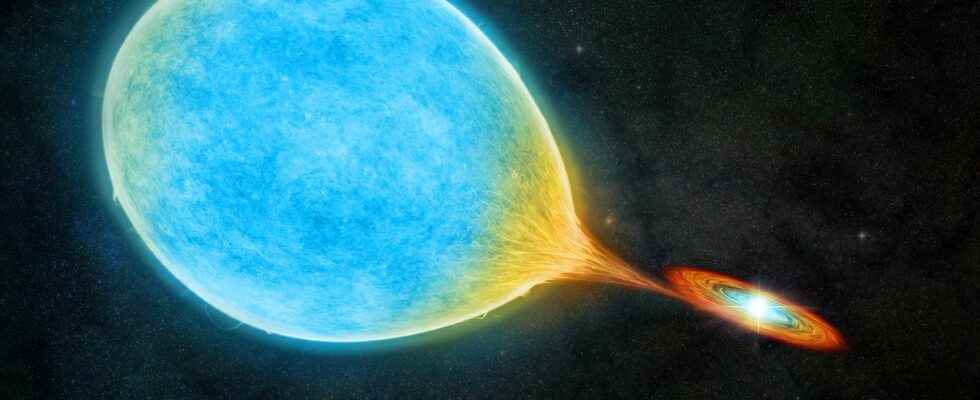She was even visible to theeye naked: scientists report in a report from theAmerican Astronomical Society the discovery of the nova the fastest ever observed! That was just over a year ago: it appeared in the sky on June 12, 2021, then faded after just a day. “It was only about a day; the previous fastest nova was the one we studied in 1991, V838 Herculis, which decayed in about two or three days”explains Summer Starrfield, professor and astrophysicist at ASU’s School of Earth and Space Exploration.
Named V1674 Herculis, it is, as its name suggests, in the constellation of Hercules, visible from thenorthern hemisphere during summer nights. She was discovered by chance, by a astronomer amateur located in Japan, then studied by several American astronomers and astrophysicists. Usually, such events last between a week and a few months. These bright explosions appear in the sky as new starshence the term Nova which was chosen to designate them.
Shards from white dwarfs
It corresponds to a sudden and intense emission of light visible from a binary system, composed of a star and a white dwarf. The latter is in fact a remnant of a dead star: white dwarfs are created following the death of a star not very massive, when it runs out of fuel. It then goes through the stage of red giant, where its upper layers extend. Its outer layers then eject, leaving only the core of the star which compresses and changes into a white dwarf.
Often found in binary systemsthese stars particularly compact attract matter of their less dense companion. As its matter warps and twists as it moves toward the white dwarf, it forms an accretion disk. Within this disc, the matter is intensely heated, so much so that it is transformed into plasma, therefore into gas ionized. And this ionized gas heats up. A lot. To the point of provoking, when the temperature and the pressure reach peaks, thermonuclear explosions. Releases fromenergy sudden events that are then detected by astronomers.
It contains other mysteries
But be careful not to confuse it with a supernova which designates either the death of a massive star in black hole Where neutron star, or the explosion of a white dwarf when it becomes too massive. Nevertheless, they can, like supernovae, lead to the creation of solar systems, similar to ours. This is what the research team is trying to study. ” We are still trying to understand how the Solar System was formed, where its chemical elements came from, assures S. Starrfield. One of the things that we are going to learn from this nova is, for example, the amount of lithium which was produced by this explosion. We are pretty sure now that a significant fraction of the lithium we have on Earth was produced by these types of explosions. »
In addition to its speed, the researchers noticed another peculiarity: the light and the energy that we receive from V1674 Herculis pulse. Every 501 seconds, a visible oscillation occurs both in the visible range and in the X-rays. Even today, a year later, this pulsation continues, always with the same regularity. “The most unusual thing is that this oscillation was observed before the explosion, but it was also present when the nova was brighter, by about 10 magnitudes”, explains Mark Wagner, a researcher at the University of Ohio. In the future, the team intends to look into the cause of the explosion, so the processes that lead to a large thermonuclear explosion similar to this, and especially on the cause of the duration so short.
Interested in what you just read?
